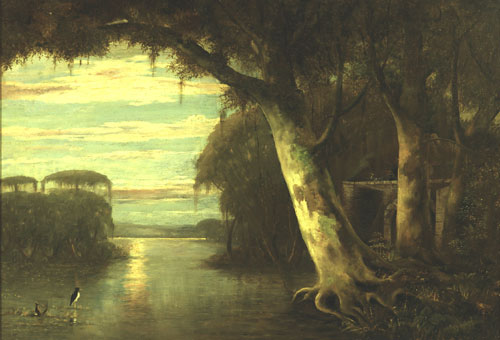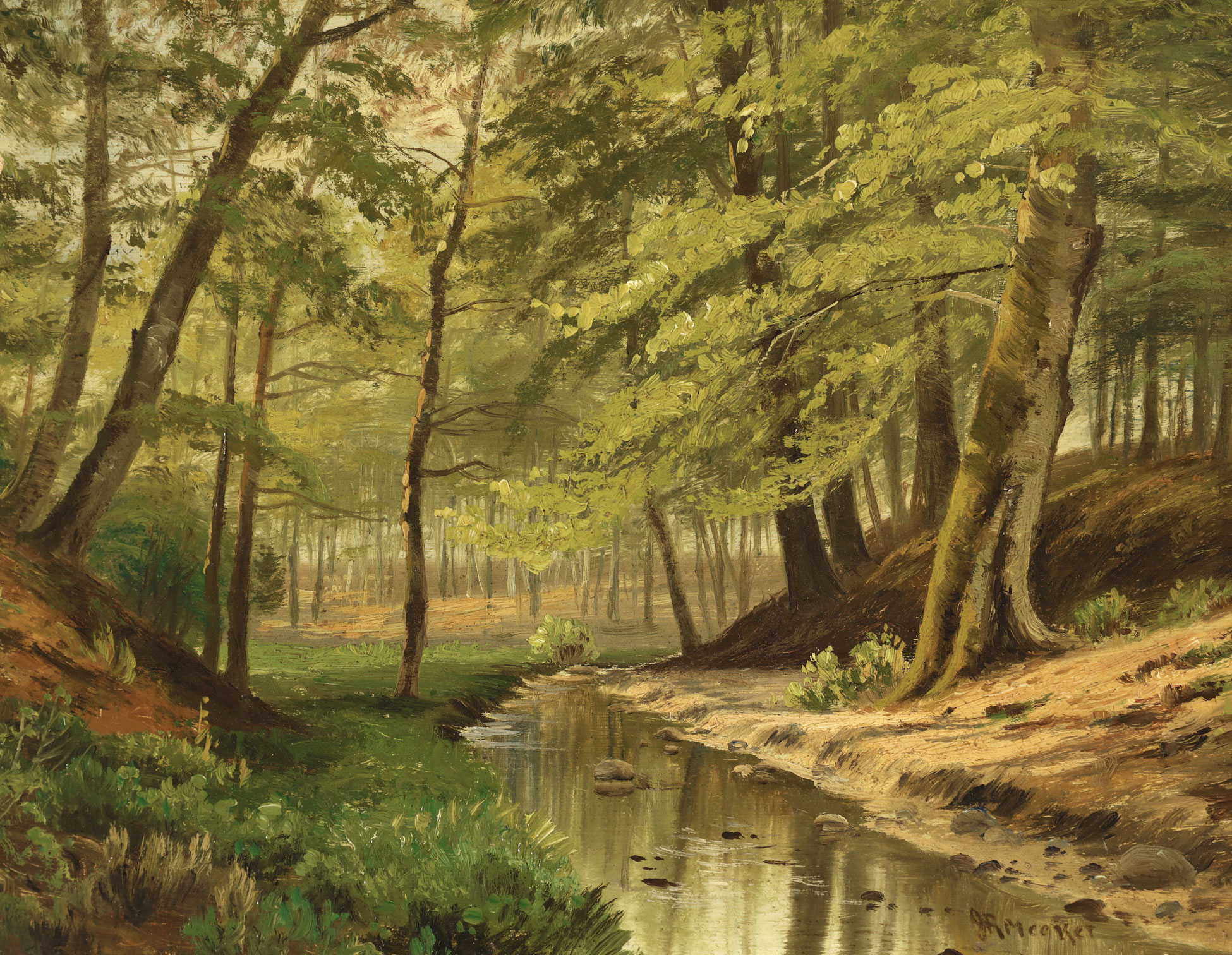Joseph Rusling Meeker was born in Newark, New Jersey in 1827 and spent his childhood in the Finger Lakes region of upstate New York. Winning an art scholarship in 1845, he enrolled in the National Academy of Design in Manhattan, where he was influenced by the school’s director and co-founder, leading Hudson River School painter Asher B. Durand. Upon completing his artistic training, he lived for a brief period of time in Buffalo, New York, before traveling to Louisville, Kentucky, where he was active as a landscape painter and taught at a local art school between 1852 and 1859. He eventually settled in St. Louis, Missouri.
Meeker began traveling throughout the South while serving as a paymaster in the United States Navy during the American Civil War. Deployed in the Louisiana swamp region, he regularly sketched the terrain during his four-year service, amassing reference material and preliminary drawings from which he later produced his signature work. At the end of the war, he returned to St. Louis, and resumed his career as one of the Midwest’s most revered landscape painters. In addition to the bayou landscapes that served as career-long inspiration, Meeker traveled to the lower Mississippi in the 1860s and 70s on drawing expeditions, and often spent summers upriver from his home in St. Louis. In the 1870s, he traveled several times to Minnesota, trips that were enthusiastically described in local papers and brought him a number of patrons in the Twin Cities. Throughout his career, he remained influenced by romantic painter J.M.W. Turner and his former instructor Asher B. Durand, yet his approach to depicting nature, in creating atmospheric scenes with formal elements that interpret rather than reproduce details distinguished him as one of the most celebrated American painters of his time. His most well-known works comprising brooding bayou landscapes devoid of human figures was inspired by Henry Wadsworth Longfellow’s epic 1847 poem Evangeline and are housed in museum collections throughout the United States. In this particular body of work, there is the visible influence of the Luminous landscape painters, who were widely influential between 1850 and 1870.
Meeker’s paintings are housed in the Brooklyn Museum, The Johnson Collection, South Carolina, Louisiana State Museum, Minnesota Museum of American Art, Morris Museum of Art, Ogden Museum of Southern Art, and St. Louis Art Museum, among others.


